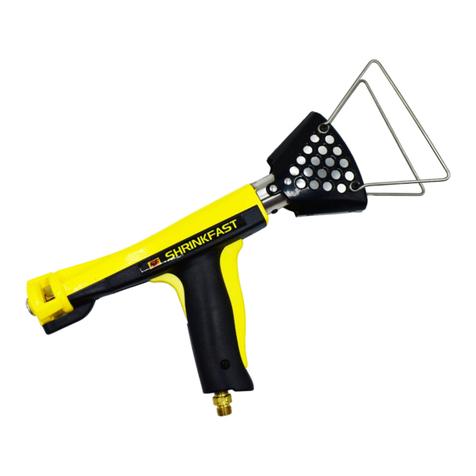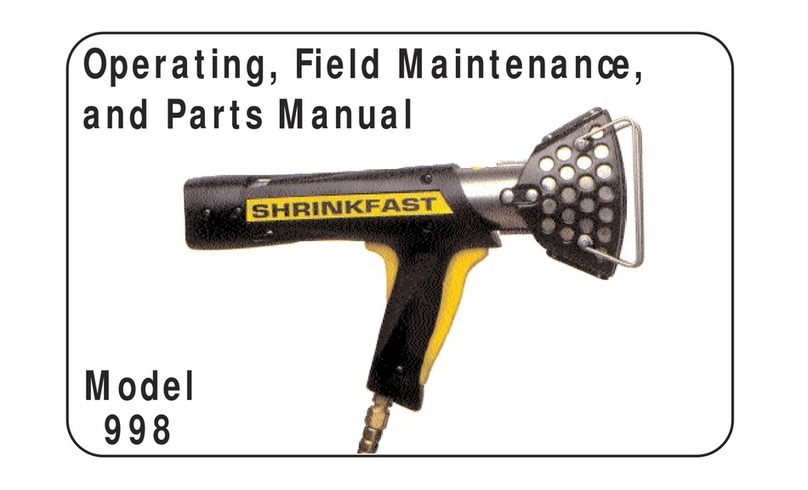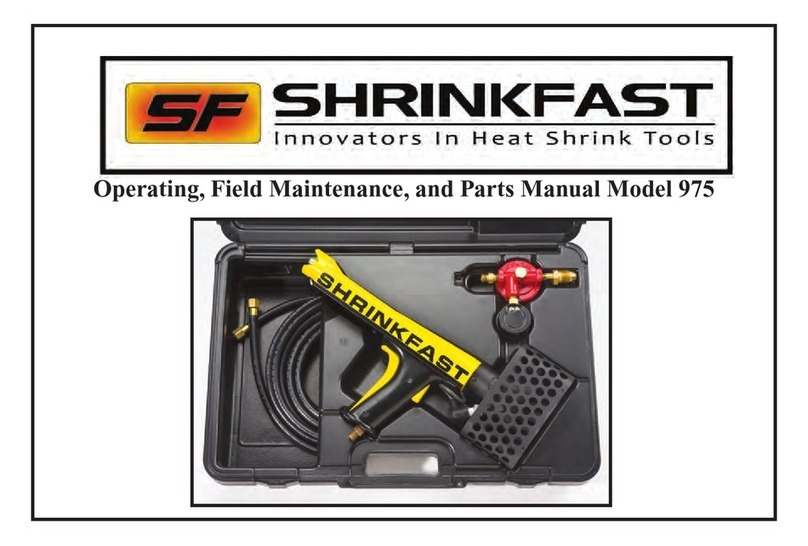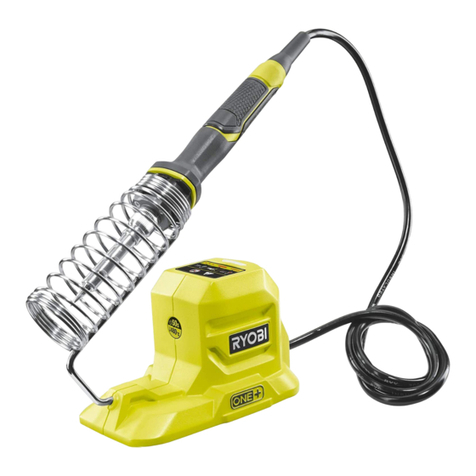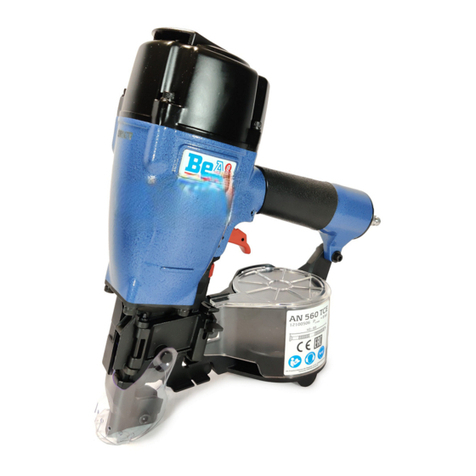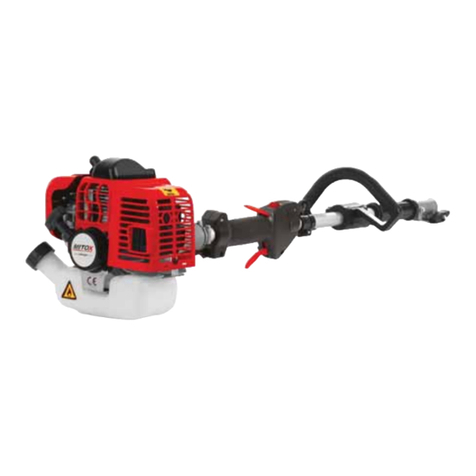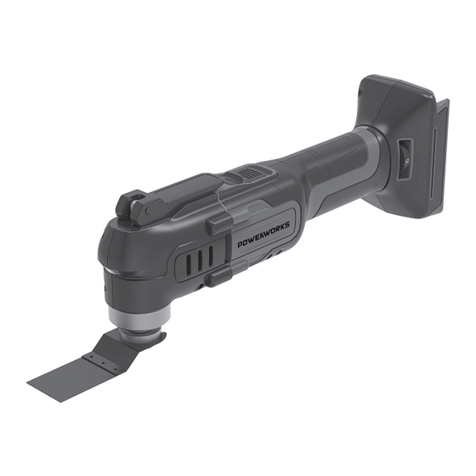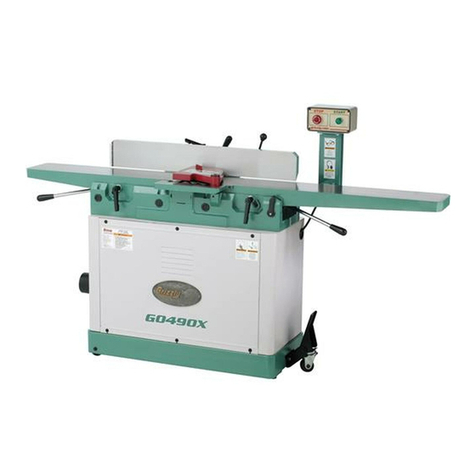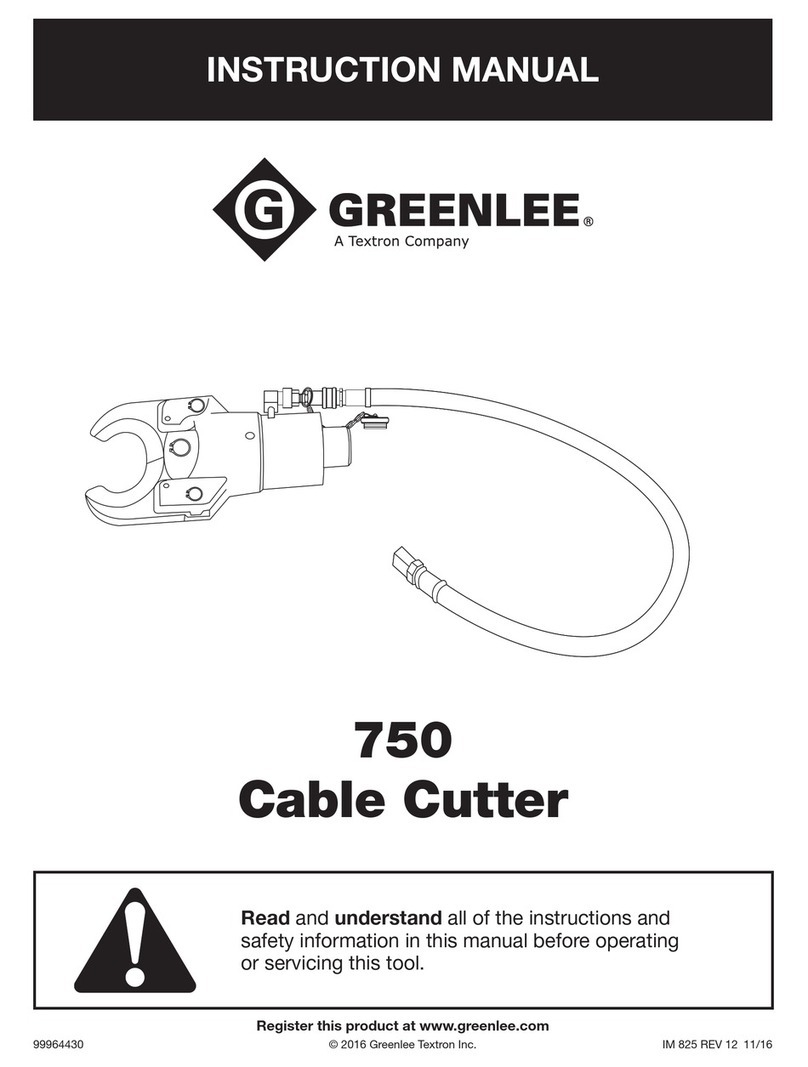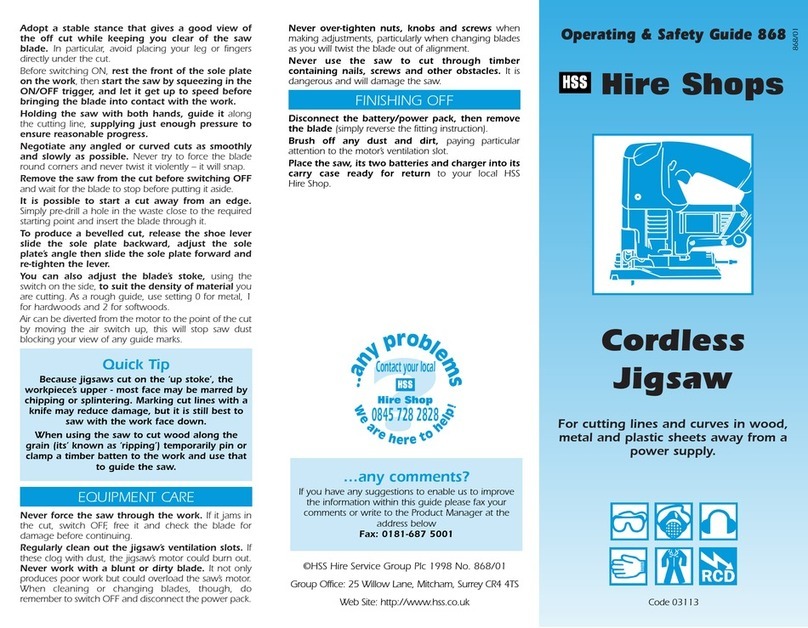Shrinkfast 998 UL User manual

Operating, Field Maintenance, and Parts Manual Model 998 UL®
17967-Shrinkfast889wPageNos:Layo t 1 11/11/15 1:19 PM Page 1

TABLE OF CONTENTS
GENERAL SAFETY PRECAUTI NS............................................................................. pages 2-4
REGULAT R PERATI N & MAINTANANCE........................................................... pages 5-7
STARTING THE HEAT T L .............................................................................................. page 8
REGULAT R MAINTANANCE & SAFETY FEATURES ........................................... pages 9-10
EXCESS FL W DEVICE ...................................................................................................... page 9
CH SING THE C RRECT PR PANE TANK ......................................................... pages 11-12
TANK PRESSURE, TEMPERATURE & PERATI N............................................... pages 13-14
VENTILATI N REQUIREMENTS .................................................................................... page 15
GENERAL INF RMATI N N SHRINK FILM & SHRINK BAGS ........................ pages 16-18
SHRINK WRAPPING TECHNIQUES
(PALLET BAGS & DD SHAPED BJECTS)
..... pages19-22
PERATING VERVIEW ............................................................................................ pages 23-24
PRINCIPLES F PERATI N .................................................................................... pages 25-27
HEAT T L PARTS DIAGRAM.................................................................................. pages 28-30
ASSEMBLY AND DISASSEMBLY ............................................................................. pages 31-35
HEAT T L SERVICE INSTRUCTI NS .......................................................................... page 36
DAILY HEAT T L INSPECTI N .................................................................................... page 37
M NTHLY HEAT T L INSPECTI N ............................................................................ page 38
TR UBLESH TING GUIDE.................................................................................... pages 39-40
TECHNICAL SPECIFICATI NS........................................................................................ page 41
17967-Shrinkfast889wPageNos:Layo t 1 11/11/15 1:19 PM Page 3

GGEENNEERRAALLSSAAFFEETTYYPPRREECCAAUUTTIIOONNSS--
RREEAADDAALLLLIINNSSTTRRUUCCTTIIOONNSS
BBEEFFOORREEOOPPEERRAATTIINNGGTTHHIISSHHEEAATTTTOOOOLL
•Do not operate this heat tool below 15 PSI or damage to the heat tool will
occur.
•Before using any heat tool, check all parts for proper function and damage to
component parts including the hose, regulator and heat tool.
•"Hidden areas such as behind walls, ceilings, floors, soffit boards and other
panels may contain flammable materials that could be ignited by the heat tool
when working in these locations. The ignition of these materials may not be
readily apparent and could result in property damage and injury to persons.
When working in these locations, keep the heat tool moving in a back and forth
motion. Lingering or pausing in one spot could ignite the panel or the material
behind it."
•Do not use the heat tool to remove paint.
•Do not point this heat tool at anyone and do not operate in an area where there
is a risk of an explosion or fire.
2
17967-Shrinkfast889wPageNos:Layo t 1 11/11/15 1:19 PM Page 4

GENERAL SAFETY PRECAUTIONS
•
When working with any type of heat or open flame, always keep a fire
extinguisher close by.
•
Always were safety glasses and gloves (flame retardant or leather is suggested)
when shrink wrapping.
Never obstruct or cover the air inlet at the back of the
heat tool. If the air flow is reduced the heat tool will not work properly.
•
When shrink wrapping outdoors, do not shrink wrap when the wind is stronger
the 10 mph.
•
When shrink wrapping indoors, make sure the work area is well ventilated.
•
Keep the work area clear of debris, wood shavings, paper products, flammable
chemicals and anything
else that may catch fire from the heat of the tool.
•
Do not wear loose clothing while shrink wrapping and also keep long hair tied
back.
•
Stay alert, watch what you are doing, and use common sense when operating
the heat tool. Do not
use tool while tired or under the influence of drugs,
alcohol or medication. A moment of inattention
while operating the heat tool
may result in serious personal injury.
•
Do not overreach. Keep proper footing and balance at all times. Proper footing
and balance enables
better control of the heat tool in unexpected situations.
3
17967-Shrinkfast889wPageNos:Layo t 1 11/11/15 1:19 PM Page 5

•
Never operate the heat tool with the combustor nozzle hard up against a surface;
this could ignite any material you are shrink wrapping.
•
Do not place the combustor nozzle (where the flame comes out of the heat tool)
next to anything while it is hot.
Never allow the combustor nozzle to come in
contact with clothing or skin.
•
Do not look down the combustor nozzle while the tool is in operation or
attached to a fuel source.
•
The heat tool should be kept 6” –8” away from the shrink film when in
operation. Never keep the heat on one area for more than a few seconds.
Once heat is applied to the shrink film,
it will continue to shrink even after
the heat is moved away from the area.
•
Never modify the tool in any way and use only Shrinkfast replacement parts
.
•
Never operate in a basement or closed in,non-ventilated area.
•
Never operate the heat tool on an area that you cannot see.
•
Always operate the heat tool with the UL®Guard installed.
4
17967-Shrinkfast889wPageNos:Layo t 1 11/11/15 1:19 PM Page 6

REGULATOR OPERATION & MAINTANENCE
Regulator Technical Overview:
•
The MEGR-6120 is a high capacity, pounds to pounds, industrial gas regulator.
It is designed to conform to UL®Standard
144 for use with LP Gas. The
maximum supply pressure is 250 PSIG. The maximum output pressure is
printed on the
regulator nameplate.
•
This regulator is not intended for use in pressure applications below 3 PSIG and
the heat tool should
not be operated at a pressure below 15 PSIG. The
operating temperature range is -40 to +200 degrees Fahrenheit.
0 – 30 PSI Pressure Gauge
POL – Attaches to
the Propane Tank
Hose Adapter –
Attaches to the
Supplied 25’ Hose
Adjustable Hand Wheel
– Adjusts PSI Setting of
the Regulator
5
17967-Shrinkfast889wPageNos:Layo t 1 11/11/15 1:19 PM Page 7

This is a variable regulator assembly and the heat tool will operate
properly
between 15 PSI and 30 PSI. The pressure can be changed by
loosening the hex nut located under the black, round hand wheelon the
regulator assembly and then turning the hand wheel to the desired pressure.
However, the optimum and factory recommendation is that you do not
adjust the pressure and keep the regulator set at the factory setting of 22
PSI.
Regulator Installation:
1.Remove the yellow cap from the POL (brass, bull nose fitting) and connect the
POL to your propane tank and tighten with the supplied wrench (all threads
are left handed thread,so tighten counter clockwise).
Propane Tank Regulator POL
6
17967-Shrinkfast889wPageNos:Layo t 1 11/11/15 1:19 PM Page 8

2.Connect one end
of the supplied 25’ hose to the hose adapter on the regulator
and the other end of the hose to the heat tool. Tighten all fittings
with the
supplied wrench (left handed threads, so tighten counter clockwise).
3.Open the propane tank valve and check for any leaks by spraying a soapy
water mixture on the fittings. If any bubbles are
visible, shut off the propane
tank and tighten the fittings.
4.When you first turn on the propane tank, the pressure gauge on the regulator
will slowly move toward the factory setting of 22 PSIG.
Once the hose is fully
pressurized, the needle on the gauge will stop at 22 PSIG. Now the heat tool is
ready to be fired.
To open the flow of
propane, turn the tank
hand wheel in a counter
clockwise motion and
watch the regulator gauge
increase to the required
22 PSI.
Pictured: Hand wheel
on top of your supplied
propane tank.
7
17967-Shrinkfast889wPageNos:Layo t 1 11/11/15 1:19 PM Page 9

STARTING THE HEAT TOOL
1.Depress the yellow safety that sits in the palm of your hand. If you do not
depress the safety first, you will not be able to pull the trigger with your finger
tips and ignite the heat tool.
2.With the safety depressed, slowly pull the trigger with your fingertips so you
first hear a slight “hissing” of propane flow, then pull the trigger completely
and the heat tool will “click” then ignite.
3.Should the gun fail to ignite, release both the safety and trigger fully to ensure
that the igniter is reset and repeat the starting procedure.
WARNING: MANY NEW USERS PULL THE TRIGGER TOO
QUICKLY AND MULTIPLE TIMES BELIEVING THIS IS THE BEST
WAY TO IGNITE THE HEAT TOOL. PULLING THE TRIGGER TOO
QUICKLY DOES NOT ALLOW THE PIEZO CRYSTAL INSIDE THE
IGNITER TO SEND PROPER VOLTAGE TO THE SPARK PLUG, SO
PULL THE TRIGGER SLOWLY IN ORDER TO IGNITE EVERY TIME.
WARNING: DO NOT TOUCH THE WIRE METAL SHIELD (UL®
GUARD) AFTER THE HEAT TOOL HAS BEEN FIRED.
!
8
17967-Shrinkfast889wPageNos:Layo t 1 11/11/15 1:19 PM Page 10

REGULATOR MAINTENANCE & SAFETY FEATURES
•Because the Shrinkfast UL®approved regulator assembly is assembled and tested at the
factory to conform to UL®Standard 144, any maintenance or repairs
should be in
accordance with this listing as well as any other applicable regulations. Regulator parts
showing wear should
be replaced as necessary. Contact your local distributor or
Shrinkfast directly for descriptions and part numbers.
IMPORTANT SAFETY FEATURE: Inside the POL fitting on the
Regulator Assembly there is a safety featured called the “Excess Flow Device”.
•This safety feature is designed to stop the flow of propane if the hose becomes
cut or detached from the regulator or heat tool during operation.
•The Excess Flow Device does not stop the propane flow 100%, but it does
reduce the flow so the user has time to get to the tank and shut off the propane
and prevent a dangerous situation from occurring.
How the Excess Flow Device Works:
•When the propane tank is first turned on the Excess Flow Device believes there
may be a downstream leak and temporarily closes the POL. The POL does not
stop the flow entirely, so there is enough propane entering the hose to begin
pressurizing the system.
9
17967-Shrinkfast889wPageNos:Layo t 1 11/11/15 1:19 PM Page 11

•Once the fuel has filled the entire hose and the regulator gauge reaches 22 PSI,
the Excess Flow Device reopens and the heat tool is ready for operation (you
will hear an audible “click” from the POL when the pressurization is
complete).
•This pressurization process can take anywhere from 7-10 seconds from when
the tank is first turned on and may take a little longer with propane tanks that
are partially filled. This feature is all for the safety of the user, but you must
wait the 7-10 seconds for the pressurization to complete before operation.
Attempting to Ignite the Heat Tool before Pressurization is Complete:
•If the user attempts to fire the heat tool before the pressurization is complete,
the pressure gauge will drop down to 0 PSI and the heat tool will not ignite. In
order to ignite the heat tool, the user must wait for the system to pressurize (22
PSI) and then the heat tool will operate properly. *This wait time will only
occur when the user first turns on the propane tank.*
WARNING: As the amount of
propane in the tank drops, the pressure
gauge on the regulator will decrease accordingly. Do not operate the heat
tool once the
pressure drops down to 15 PSIG. Operating the heat tool
below 15 PSIG, will result in damage to the heat tool’s internal
components.
10
17967-Shrinkfast889wPageNos:Layo t 1 11/11/15 1:19 PM Page 12

CHOOSING THE CORRECT PROPANE TANK
•!"#$#%&$#%'()%'*+#,%)-%+$)+&.#%'&./,%0)11).2*%&3&42&52#6%
A.
Correct: Vapor withdrawal—Use this style (exactly the same as a BBQ grill tank)
B.
Not Correct: Liquid withdrawal—Do not use this style (used on fork trucks)
%% %
WARNING: Using a liquid withdrawal (fork truck) propane tank will clog
the orifice in the heat tool and result in an extremely long and dangerous flame.
11
17967-Shrinkfast889wPageNos:Layo t 1 11/11/15 1:19 PM Page 13

%
CHOOSING THE CORRECT PROPANE TANK (CONTINUED)
•Propane tanks are available in a variety of sizes. The most popular tank sizes:
•20 lb. tank
similar to a BBQ propane tank for smaller
applications.
•40 lb. tanks are commonly used in most industrial applications.
12
17967-Shrinkfast889wPageNos:Layo t 1 11/11/15 1:19 PM Page 14

TANK PRESSURE, TEMPERATURE & OPERATION
•Tank pressure depends on the temperature of the tank. At room temperature (72°F) the
pressure in a full tank is
110 PSI and drops to 22 PSI at 0°F.
If the propane tank ices up during operation:
When the heat tool is in operation, the temperature of the tank drops due to the
evaporation process of liquid propane to propane gas. After prolonged use and
continued drop in propane pressure, the temperature of the tank
may drop to 0°F
usually accompanied by icing on the outside of the tank and regulator.
13
17967-Shrinkfast889wPageNos:Layo t 1 11/11/15 1:19 PM Page 15

WARNING: Icing of the tank and regulator is quite common when
running the heat tool continuously with a partially filled propane tank.
However, if you are ever in doubt regarding the safety or operation of
your heat tool, shut off the tank and contact your authorized Shrinkfast
distributor or Shrinkfast directly.
•Small or nearly empty tanks ice up faster than larger, full tanks. Typically, a
full 20 lb. tank, if operated continuously, will run for 90 minutes before ice
builds up on the outside of the tank.
•If your shrink wrapping project requires continuous use of the heat tool, try the
following methods:
•Use multiple tanks—Switch the heat tool from one tank to
another.
•Use a portable fan—Point an ordinary desk fan at the tank, and
the air flow around the tank will help the tank from icing up.
14
17967-Shrinkfast889wPageNos:Layo t 1 11/11/15 1:19 PM Page 16

VENTALATION REQUIREMENTS
WHEN OPERATING HEAT TOOL
WARNING: During operation, the heat tool consumes propane and air
and produces carbon dioxide, carbon monoxide (CO), and
water vapor.
Prolonged exposure to Carbon Monoxide is lethal and adequate
ventilation must be provided if the heat tool is to be operated indoors.
•
To maintain a safe CO concentration (50 parts per million as set by OSHA
Standard 1910.1000 –Air Contaminants), ventilation requirements are 2,000
cu. ft. /min. of fresh air while the heat tool is operated at a maximum operating
pressure of 30 PSI.
•
Based on a 1 1/2 minute heating cycle per pallet, the fresh air requirements are
3000 cu. ft./pallet. Example: If the production rate is 10 pallets per hour, a
ventilation system needs to provide 500 cu. ft. /minute.
•
In areas where ventilation is provided by open doors or windows, a safe level of
CO will be maintained as long as the room temperature does not rise above
150°F.
15
17967-Shrinkfast889wPageNos:Layo t 1 11/11/15 1:19 PM Page 17

GENERAL INFORMATION ON SHRINK FILM & SHRINK BAGS
Shrink Wrap (#4 LDPE):
•The shrink wrap is manufactured in multiple colors and is typically a 6 or 7 mil,
low density polyethylene (#4 for recycling purposes). What makes this material
different than construction plastic sheeting is that it contains shrinking resins,
UV inhibitors, anti-brittling compounds, and strengtheners so that it will not rip
or tear. Make sure the shrink film is manufactured using only virgin resin
material.
WARNING: Shrink wrap can burn. If heat is applied incorrectly, shrink
wrap can ignite into open flame. It can also drop down on to other
combustible material and cause secondary ignition and fire. If at any time
you observe the shrink wrap on fire, immediately stop what you are doing
and carefully inspect the area where you are working for a possible fire.
Keep a fire extinguisher available at all times.
Measuring for the Shrink Film:
•Regardless of the shape of the object you are covering, it must be viewed as a
cube in order to find the proper shrink film size. In general, you measure the
width by starting at the lowest point of the object or however far down you
16
17967-Shrinkfast889wPageNos:Layo t 1 11/11/15 1:19 PM Page 18

want the film cover to reach. Measure up the side, over the top, and down the
opposite side to the lowest point. Add one foot to this number to accommodate
heat welds and this will indicate how wide your shrink wrap should be. This
process will determine the square footage of the object being shrink wrapped.
•For boat wrapping or storage purposes, a 6 or 7 mil shrink film is installed, but
the mil thickness depends on the project requirements and can be best
determined by a shrink film
distributor.
Measuring for the Shrink Pallet Bags:
•For shrink wrapping a pallet, a 4 mil shrink bag is typically used for loads of
1,000 lbs. or
less. You should always add at least 2" to the length and width of
your measured object when
sizing the correct pallet bag and at least 4-6" to the
height (including the pallet) to account
for the material shrinking when
applying the heat.
•Again, not all plastic bags are shrink bags; therefore, be specific. Shrink film
should be made of virgin resin,and not reprocessed material.
17
17967-Shrinkfast889wPageNos:Layo t 1 11/11/15 1:19 PM Page 19

MEASURING FOR A SHRINK PALLET BAG
1) Measure the length, width and height of the
pallet to be covered.
2) Determine the Length (L) of the bag, by
adding 2" to the length of the pallet.
3) Determine the Width (W)of the bag, by
adding 2" to the width of the pallet.
4) The Height (H) of the bag is determined by
measuring the height of the pallet (including the
height of the pallet itself) and adding 4-6”. The
added length allows you to tuck the ends of the
bag under the pallet before applying heat so
that it does not pull up over the pallet edges.
Example: If the pallet size is 48"(length) x
40"(wide) x 50"(height), the bag dimensions are
as follows: Length (L) is 50", Width (W) is 42"
Height (H) is 56"(always go higher in height if
they do not have the exact bag height available).
18
17967-Shrinkfast889wPageNos:Layo t 1 11/11/15 1:19 PM Page 20

19
17967-Shrinkfast889wPageNos:Layo t 1 11/11/15 1:19 PM Page 21
Table of contents
Other Shrinkfast Power Tools manuals
Popular Power Tools manuals by other brands
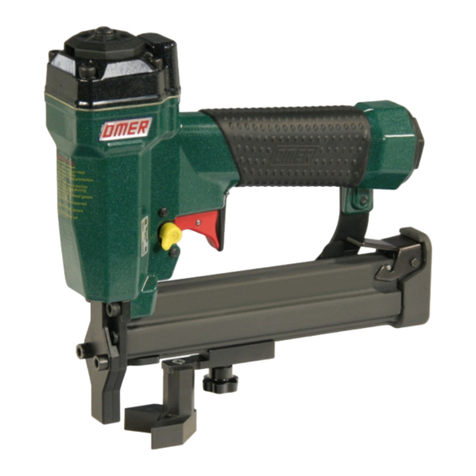
Omer
Omer VN11.15 Use, maintenance and spare parts manual
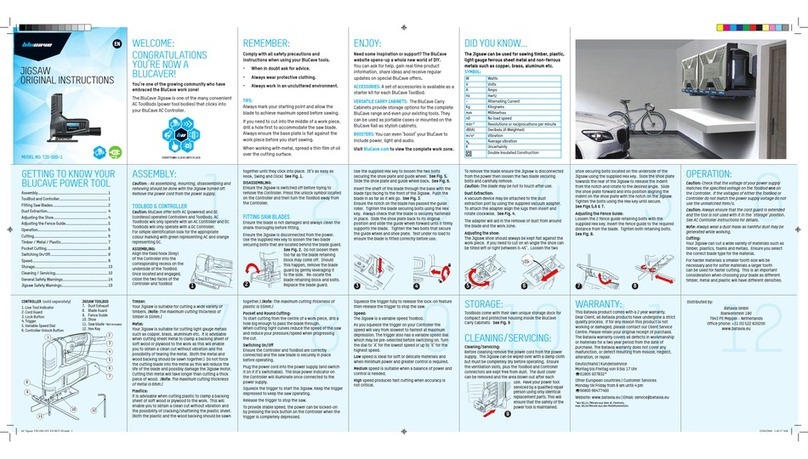
Blucave
Blucave TJS-500-1 Original instructions

Viega
Viega MegaPress XL PressBooster 4896.2XL instruction manual
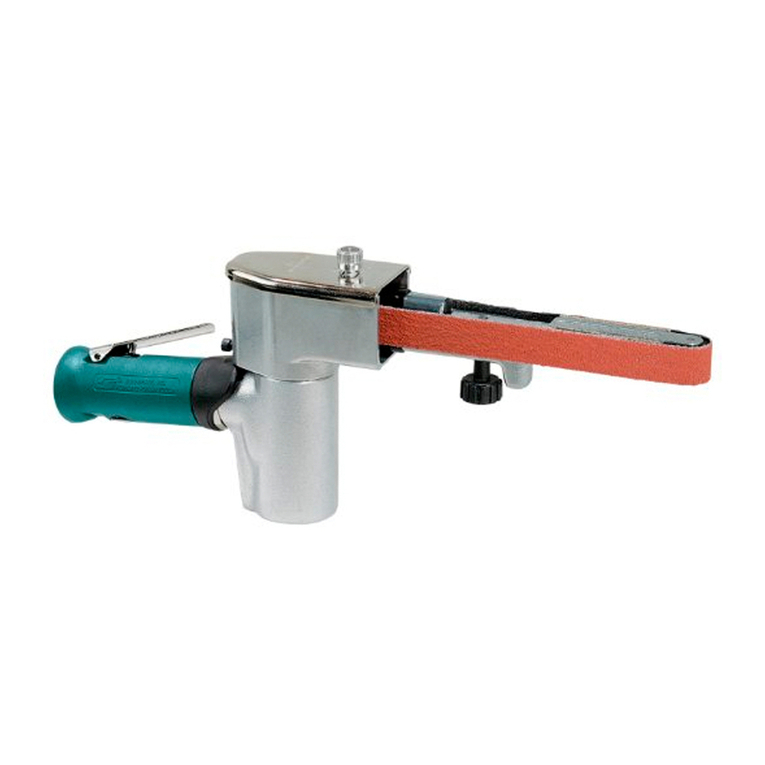
Dynabrade
Dynabrade 40324 Disassembly & Assembly Instructions
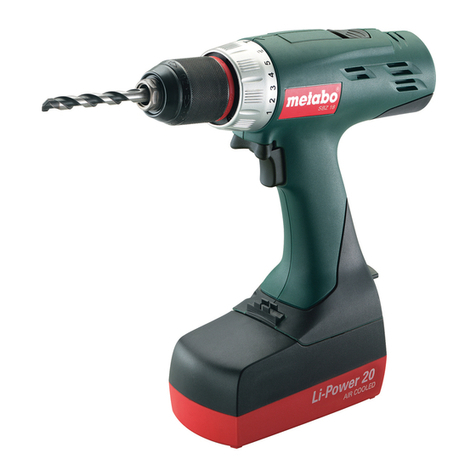
Metabo
Metabo BSZ 9.6 operating instructions
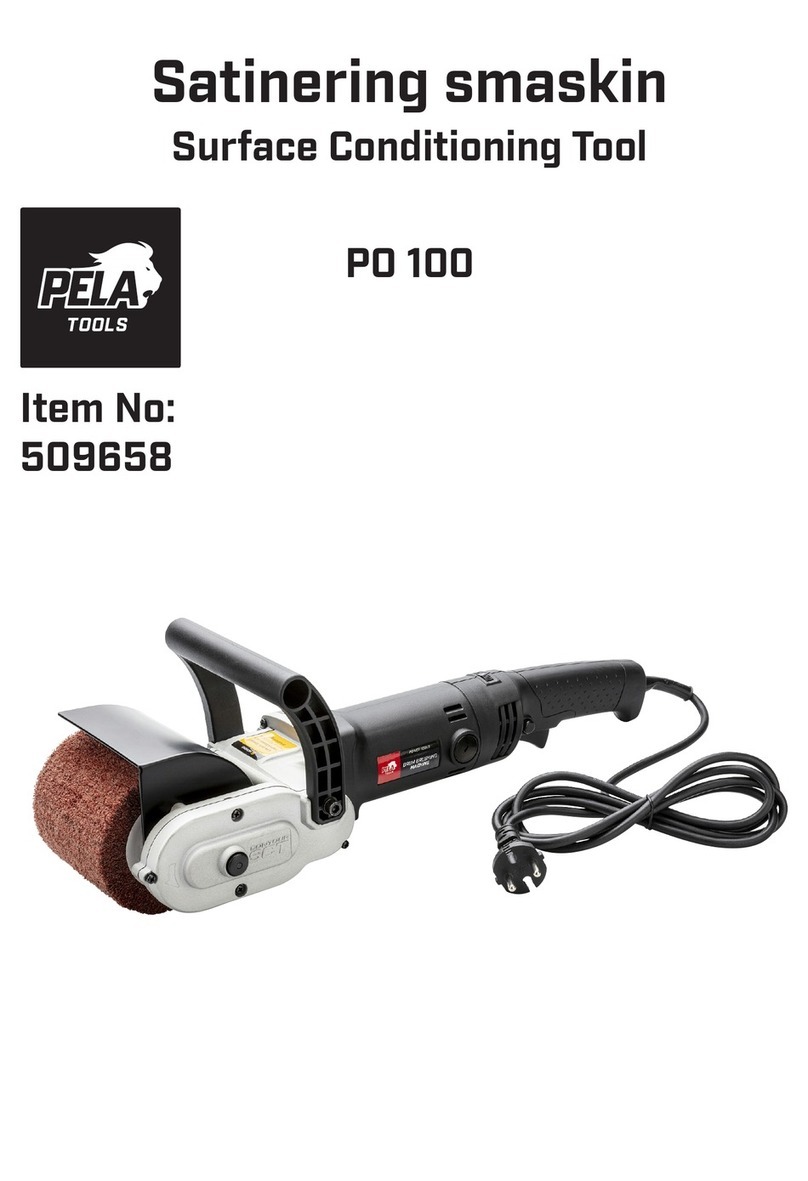
pela tools
pela tools PO 100 manual
